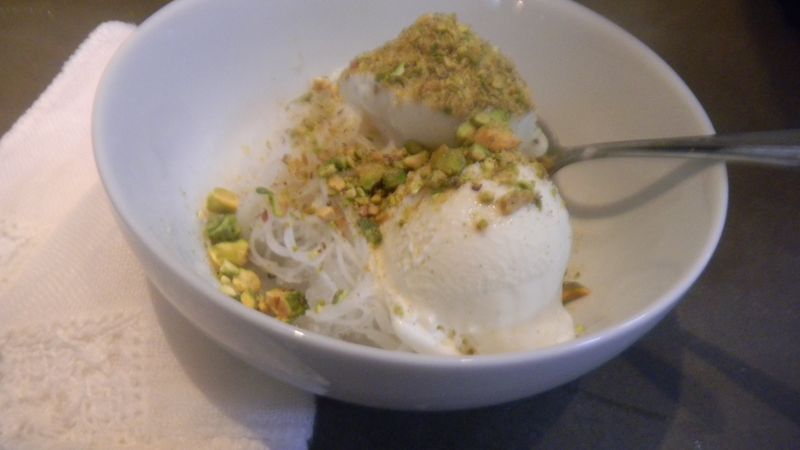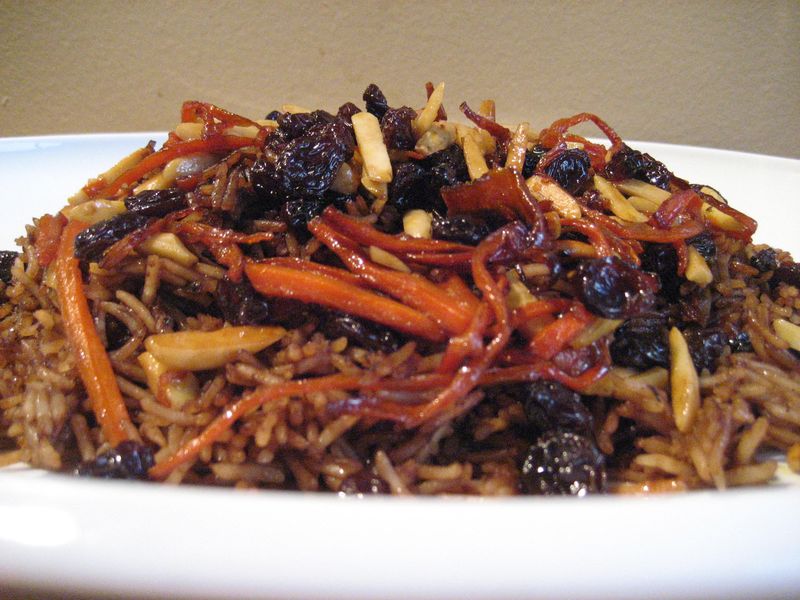By Humaira
As a little girl in Kabul, I loved playing football (soccer), biking, and jumping off our home's ten foot high wall into a pile of snow. In the two countries where I spent most of my childhood, India and Afghanistan, boys had freedoms that girls could only dream about. Perhaps that is why I decided to take on a boyish persona. Without any labels or criticism, my Afghan parents accepted my eccentracities and accomodated my request for short hair and boyish clothes.
HG & Baba
Baba and I, 1977 Kabul, Afghanistan
Now, my eldest daugther has the same tendencies. Perhaps the tomboy gene was passed on to her. While fellow moms in San Francisco congratulate me on how I handle this "situation", I delight in her obsession with building a skate board as opposed to shopping for makeup.
It was last year when I first learned about the popularity of a practice called "bacha posh", dresses like a boy. The director of Love In Afghanistan, asked me for cultural advice on the unique play she was directing for the Arena Theatre. The play is a love story, if you didn't already guess it, between an African American rap artist and an Afghan girl who is a bacha posh.
Prior to this call I was familiar with the term but I thought it was something that came about during the time of Taliban, when women were imprisoned in their homes and needed a man to represent them in the outside world.
It turns out that Dan Rather's popular documentry, "A Family Secret", brought families dressing their daugthers in boys' clothes is a widely practiced, ancient custom in Afghanistan. My family and I are not convinced that the practic of bacha posh is "widely" practiced, as the documentry claims.
However, it's a subject that has caught the imagination of the Western Media. Since 2010, there has been shows, articles, interviews and now a book by Nadia Hashimi, THE PEARL THAT BROKE'S IT'S SHELL.
I am thrilled to see an Afghan write about this subject. Nadia's book delves into the world of Rahima, who becomes Rahim while guided by stories of her great aunt Shekiba, who was also a bacha posh.
The book helps the reader get into the story immediately. Within the first couple of chapters, the reader experiences the family's struggle and the mother's desperation, which forces her into the decision of turning her daughter into a boy.
Rahima, reluctant about the transformation to Rahim, quickly embraces his new life as he delves into freedoms bestowed on boys. He covets the higher status in his family and exemption from girl chores. He is the one who rights the wrong of the mother with a cursed womb which can only carry girls.
Rahim eventually has to face going back to being a girl, once he reaches puberty. He has to give up his freedom to freely go outside, save his sister's honor and help his desperate mother, when the prospect of marriage to settle a family debt enters his reality.
I hope this introduction whets your appetite, and inspires you to pick up this book for your summer reading. When my family left Kabul in 1979, I left my boyish persona behind and re-invented myself as a girl when we reached the United States. Unfortunately not all women have the luxury to freely cross the gender divide as I did at age thirteen.
NadiaHashimi
Nadia Hashimi was born and raised in New York and New Jersey. Both her parents were born in Afghanistan and left in the early 1970s, before the Soviet invasion. Her mother, granddaughter of a notable Afghan poet, went to Europe to obtain a Master’s degree in civil engineering and her father came to the United States, where he worked hard to fulfill his American dream and build a new, brighter life for his immediate and extended family. Nadia was fortunate to be surrounded by a large family of aunts, uncles and cousins, keeping the Afghan culture an important part of their daily lives. She and her husband are the beaming parents of two curious, rock star children and an African Grey parrot.
Humaira Ghilzai of Afghan Culture Unveiled speaks to Nadia Hashimi about her book, lessons learned and Nadia's challenges as a vegetarian Afghan.
Humaira: How did you get interested in the practice of bacha posh?
Nadia: A few years back I read an article by Jenny Nordberg in the New York Times about the bacha posh practice. I had heard of the practice but I started to think about what the tradition meant for girls of Afghanistan. Most girls in Afghanistan do not experience life as a bacha posh but it is done. What message does this send to the youth of the country? How does a young woman cope with experiencing life as a boy and then again as a girl girl in a society with such a gender divide? I came to appreciate that the bacha posh practice could be a compelling means of taking a closer look at the gender gap and its implications for Afghanistan's daughters.
Humaira: What did you learn about yourself while researching and writing your book?
Nadia: Great question! The biggest realization for me was that I am more outraged, than I thought, with the injustices suffered by women and girls in today's world. I've always believed that women need to stand up for our rights because injustice reaches every corner of the planet. even a progressive country like the United States.
The process of writing this story, however, channeled my energy. I want others to be as outraged as I am at gender inequality in any form. Sometimes it's subtle, like a salesperson sidestepping a woman to address her husband, the assumed "decision maker" in the family. Sometimes it's blatant and brutal, like rapes dismissed with a shrug of the shoulders because "boys will be boys." I've realized also that I need to be very conscious of how I raise my daughter and what I teach her.
Though she is only three years old, I encourage her to stand up for herself around other children (including her four year old brother!) and that sometimes she will need to raise her voice. It is equally important to me that I raise my son to respect a girl's personal space and opinion. As parents, it's our responsibility to model this behavior in the home and deliver clear messages to our children if we want to see a change in the world around us.
Humaira: I believe you've been there once with your parents. Is that right? What were your impressions of Afghanistan the first time you visited?
Nadia: My trip to Afghanistan in 2002 was both heartwarming and heartbreaking. I was so happy to meet cousins, uncles and aunts and to walk through the neighborhoods I'd gotten to know through my parents' stories. I was thrilled to see school children lining up excitedly in the school yard at the start of the day and meet Afghan physicians staffing a new hospital for patients with tuberculosis.
On the other hand, it was disheartening to see an overflowing maternity hospital with laboring women in hallways, courtyards and unsanitary beds. My mother's family home had been reduced to rubble, recognizable only by a curved railing that once led to their backyard.
Hope and despair coexisted on the same street, in the same home. The country has suffered greatly with decades of violence and instability. On the other hand, Afghan youth were particularly anxious to get an education and nearly every young person I spoke with had admirable, professional aspirations. My hope and belief is that optimism will trump despair and that the nation will recover.
Humaira: What are your favorite Afghan dishes?
Nadia: I am, as my husband says, a rare Afghan in that I am a vegetarian (though in the last couple of years I've started eating fish as well). For those familiar with Afghan food,meat is a huge part of our cuisine but there are plenty of yummy vegetable dishes as well. Just this past weekend, my sister-in-law cooked vegetarian mantoo (dumplings) as a special treat. Both my sister-in-laws are intuitive and creative cooks and I'm lucky that I get to enjoy their talents! For my favorite rice dish, I would have to go with mosh-palow, rice with mong beans, It's so hearty on a winter day!
Humaira: Do you enjoy cooking? Do you cook Afghan food?
Nadia: I don't cook every day so when I do cook, I really enjoy it. I make Afghan food regularly but I also find it fun to try new dishes and ingredients outside my comfort zone. With warmer weather here, I get to do some of my most enjoyable kind of cooking - grilling! Our household loves grilled eggplant and it's wonderfully easy (as long as you don't get distracted). I also like to do chicken kebabs. I marinate them in yogurt and spices for a few hours and they seem to be a favorite with the family. In the winter, I bring out the slow cooker for dishes like vegetable stew or soups that warm the belly with lots of flavor.
Of course, there's nothing like making good old fashioned cupcakes with the kids. They love helping me measure and mix the ingredients, a good introduction to practical skills. I try to stick with dishes that are fairly uncomplicated because I want to enjoy my time in the kitchen. Food is so important to our health. It plays a major role in our social lives and it's a daily necessity. The more ways we find to enjoy it, the better!
Related articles






Help! I Need a Title for My Novel














